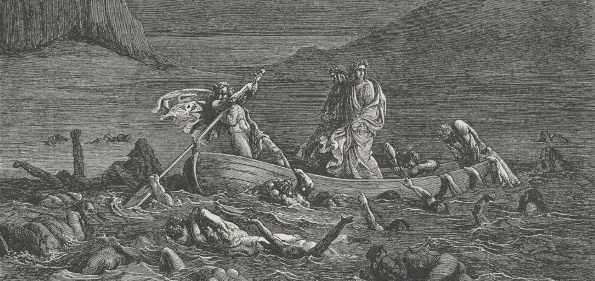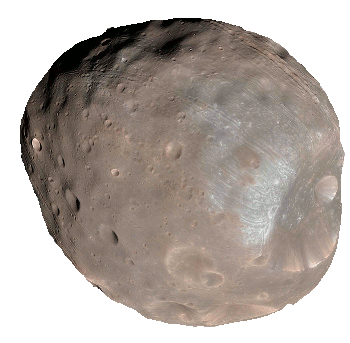The Ides of October
October 15, 2012
October fifteenth may not appear to be an exciting date, but October 15,
1582, was an exciting day. October 15, 1582, was the first day of the
Gregorian calendar, named after
Pope Gregory XIII. Gregory realized that a revision of the
Julian calendar, a remnant of
Roman times, was in order. The Gregorian calendar is the presently used
civil calendar for the
United States and most of the world.
The Gregorian calendar was a big change in 1582, since October 4, 1582, was followed by October 15, 1582. Some of the populace were worried that they were actually losing ten days of their lives. That's another reason why
public education is important today.
Astronomers still prefer using the
Julian date, a day count from
noon,
GMT, on January 1, 4713 BC. Today is Julian day 2456216, starting at noon. Astronomically, starting things at noon makes a lot of sense, since that's when optical astronomers, at least those living near
Greenwich, England, are still in bed.
Spreadsheets use a similar dating idea,
usually keeping track of fractional days since midnight December 31, 1899.
There are a few notable people born on this date in the post-Gregorian calendar period.
German philosopher,
Friedrich Nietzsche, was born on this date in 1844;
economist,
John Kenneth Galbraith, in 1908; and
automotive executive,
Lee Iacocca, in 1924. This is also the supposed birth date of the Roman
poet,
Virgil (Publius Vergilius Maro), who was born in 70 BC, before the Gregorian calendar.
I write, "supposed," since the
evidence that places Virgil's birthday on our October 15 is not that great. The first clue is the names of the
months.
September,
October,
November and
December were the seventh, eighth, ninth and tenth months, not months 9-12 as they are today. Also, Virgil's recorded birthday is not an actual date, but rather the
Ides of October. This is generally taken as the fifteenth of October, but I'm sure there was always a rounding, up or down, when it came to a birthday in those days, to make things easier to remember.
I mention Virgil because of his appearance in
Dante's Inferno.[1-3] In that book, Virgil is
Dante's guide to the
Underworld, and he introduces Dante to some of the
STEM celebrities of
antiquity. These were
Avicenna, who wrote books on
mathematics and many of the
sciences;
Euclid, who needs no introduction;
Pedanius Dioscorides, who wrote an important
pharmacopeia; and
Hippocrates.

Virgil and Dante crossing the Styx in Phlegyas' boat. Detail of an illustration by Gustave Doré from Dante's Inferno. (Via Wikimedia Commons)
So, which famous scientists have an October 15 birthday? There are four who are considered important enough to command a
Wikipedia entry.
• Evangelista Torricelli (1608), the Italian physicist who invented the barometer.
• Asaph Hall (1829), American astronomer who discovered Deimos and Phobos, the moons of Mars.
• Malcolm Ross (1919), atmospheric physicist and balloonist.
• Peter Doherty (1940), Australian immunologist and Nobel laureate, noted for his work on the major histocompatibility complex.

A moon with personality.
Asaph Hall would never have expected Phobos to be so unlike a sphere when he discovered the moons of Mars in August, 1877.
(Mars Reconnaissance Orbiter photograph, via Wikimedia Commons)
These four scientists are on a list of 185 famous people with an October 15 birthday. Four scientists out of 185 is just 2.1%. The rest of the list is replete with
entertainers and
athletes. You can clearly see where the values of the populace lay, although one mitigating effect might be that scientists are generally famous only when they're old. The other professions favor the young, so there will be more such entries. You might call this the
Bieber effect.
Of course, one data point is just
anecdotal evidence, which does not satisfy a scientist. I checked October 14 (6/204 = 2.9%) and October 16 (2/180 = 1.1%). The October 16 figure might be inflated, since one of the scientists (
engineer,
María Eugenia Larraín) is there because of her career as a
model. I've always considered engineers to be fellow scientists. At the
Ph.D. level, especially, there's no real difference.
References:
- La Divina Commedia di Dante: Inferno by Dante Alighieri (Italian version), Project Gutenberg.
- Divine Comedy: Hell by Dante Alighieri, Longfellow's Translation, Project Gutenberg.
- Divine Comedy: Hell by Dante Alighieri, Translation by Henry Francis Cary, with Gustave Doré illustrations, Project Gutenberg.
Permanent Link to this article
Linked Keywords: October fifteenth; 1582; Gregorian calendar; Pope Gregory XIII; Julian calendar; Roman Empire; civil calendar; United States; public education; astronomer; Julian day; Julian date; noon; Greenwich Mean Time; GMT; Greenwich, England; spreadsheet; German; philosopher; Friedrich Nietzsche; economist; John Kenneth Galbraith; automotive executive; Lee Iacocca; poet; Virgil; month; September; October; November; December; Roman calendar; Ides; Dante's Inferno; Dante Alighieri; Dante; Underworld; STEM fields; STEM; antiquity; Avicenna; mathematics; science; Euclid; Pedanius Dioscorides; pharmacopeia; Hippocrates; Wikimedia Commons; Wikipedia; Evangelista Torricelli; barometer; Asaph Hall; Deimos; Phobos; satellite; moon; Mars; Malcolm Ross; balloon; balloonist; Peter Doherty; major histocompatibility complex; Mars Reconnaissance Orbiter; entertainer; sportsperson; athlete; Justin Bieber; anecdotal evidence; engineer; María Eugenia Larraín; model; Doctor of Philosophy; Ph.D.